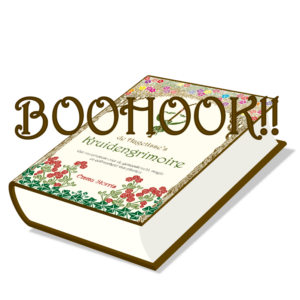
Have you ever tasted fried or roasted fennel? Just prepared with some olive oil, salt and pepper? Or with some blue cheese? I for one love it! Many of you will know that fennel, Foeniculum vulgare, is edible. It is not a common vegetable, but most gourmets eat it regularly.
However, you can do much more with fennel than eat it. Our ancestors knew that well. There is a reason that this plant is included in the Capitulare de villis, Charlemagne’s ordinance that determined which plants should absolutely be in every royal garden.
Fennel has interesting medicinal properties. A well-known one is its effect on the digestive tract. Many nursing mothers know all about this and drink fennel tea to prevent their children from getting colicky.
Less known is that it also stimulates the production of breast milk. And even lesser known is its strong effect on respiratory diseases such as bronchitis. And there are more applications!
Fennel is also known for its magical properties. It is a popular protective plant, useful for protection in general, but especially against malicious entities. Apparently, dwarves will do a runner whenever they spot fennel. You can harness it to disenchant people who are under the influence of magic. In addition, this plant can be used for several magical medicinal purposes. Think of combatting aging but also tick bites. In short, fennel is an interesting plant indeed.
Fennel is a beautiful plant that can grow up 2.5 metres high. It stands on a sturdy root from which a marrow-like to hollow, grooved stem emerges. This stem is blue-green in colour, just like the leaves and strongly branched.
Those leaves are finely pinnate, ending in filiform leaflets. In some varieties, the edible leaf sheaths grow into what looks like complete, above-ground bulbs, in others this is less pronounced. The first type is the fennel as we know it from the shops.
The flowers are small, light yellow and yellow-green in colour and grow in large umbels of ten to forty small flowers without calyxes. These flowers are popular with insects. The seeds that emerge after flowering smell and taste like aniseed and are initially blue-green but eventually turn grey-brown in colour. These seeds are ovoid schizocarps with longitudinal ribs.
Fennel has been popular since ancient times, not only as a vegetable and medicine, but also as a prize. Roman gladiators and champions in ancient Greece were crowned with the foliage.
Fennel oil, which is pressed from the seeds of this plant, is used in all kinds of care products. Fennel oil deodorises and can therefore be used as a deodorant.
Insects love flowering fennel, but dried it repels them. In the past, beehives were often coated with fennel to ensure that the bees stayed with the hive.
In sport fishing, fennel is sometimes used as bait.
Fennel is in many liqueurs, including Pernod.
In the past, the pith from fennel stems was used as tinder. This smouldering tinder, wrapped in bark, was used to carry fire from one camp site to another. According to Greek mythology, this is how man got their hands on fire. The titan Prometheus brought a glowing ember in a fennel stalk to the people. Zeus was furious and had Prometheus chained to the Caucasus. Every day a vulture would peck out his liver, which then grew back at night. This continued until Hercules freed Prometheus and brought him back to Olympus.
Basic membership is free. A plant monograph contains:
It's not allowed to copy content of this website
and view hidden content
